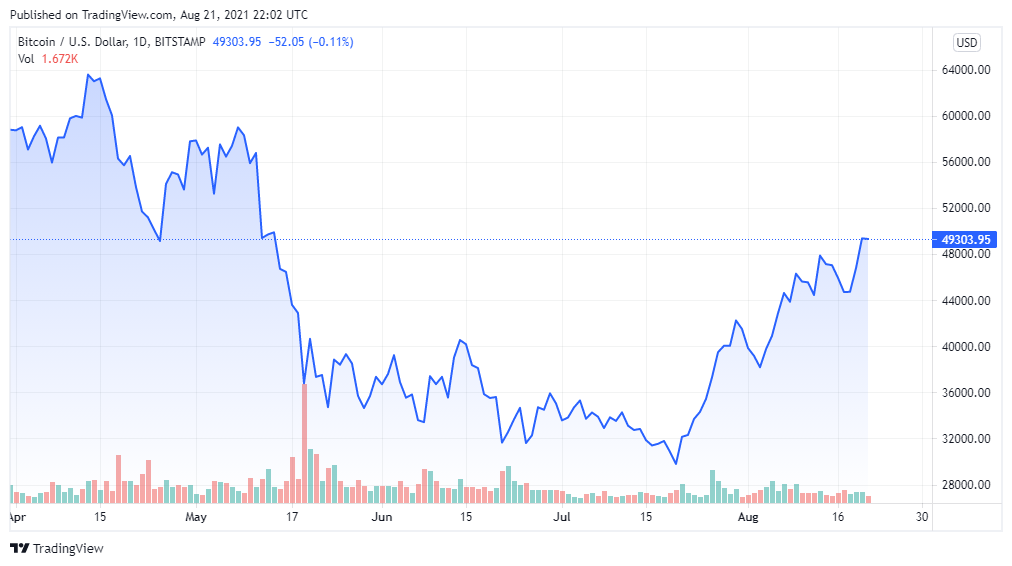Why does a seemingly abandoned MIT project from 2016 still matter in 2021? Because MIT ChainAnchor serves as a model for future attacks to the Bitcoin blockchain. A decentralized, permissionless, and uncensorable network is a threat to the status quo. The value and freedom that Bitcoin brings to the world comes at the expense of those who want the population poor, scared, and easy to control. The thing is, they also see incredible value in the network. And they want to have their cake and eat it too.
A few days ago, Bitcoin technical expert Shinobi brought the MIT ChainAnchor project back into the spotlight:
This is the most important thing to understand about regarding threats to Bitcoin: https://t.co/iIqZqRJZfj
This is what all the regulation is creeping towards. Don't worry, they'll take their time over a decade or two. Like they do with everything they've taken away.
— Divided and Conquered (@brian_trollz) August 18, 2021
What is the project about and why is it still relevant? That’s what we’re here to discuss.
All About MIT ChainAnchor ’s Evil Plan
It’s not a secret that Bitcoin has one weak spot: a 51% attack. If a single entity takes control of 51% of the mining hash rate of the network, it could use its newly found powers to alter transactions. Let’s quote Investopedia for precision:
The attackers would be able to prevent new transactions from gaining confirmations, allowing them to halt payments between some or all users. They would also be able to reverse transactions that were completed while they were in control of the network, meaning they could double-spend coins.
The MIT ChainAnchor project is a variation of this concept. It seemed to attempt “to make the existing permissionless Bitcoin block-chain into a centrally controlled, permissioned chain.” Besides taking control of the network, its aim was to make all the participants register their identities in order to participate. It was uncovered by self-proclaimed “cryptochronomancer” Peter Todd, who said:
Based on the information I have available to me, it appears that the MIT ChainAnchor Project is in part an attempt to get Bitcoin users to register their real world identities and associate their transactions with those identities. Initially this would be on an opt-in basis, however it appears that ChainAnchor has a longer-term plan to bribe and coerce miners into only mining transactions from registered users, eventually prohibiting non-registered users entirely.
How was MIT ChainAnchor going to do that? Well…
Taking Control Of The Bitcoin Network In 3 Easy Steps
- “Forming a “permission group.” The keys these people hold represented the fact that they “complied with AML regulations and registered their real-world identity.” Of course, a backdoor “allowed the system administrators to collude to deanonymize users” That meant “warrants requesting information on user transactions” could be met.
-
“Bribe miners to only mine blocks containing non-anonymous transactions from registered users.” Of course, “as part of the bribe, miners would also be required to register their identities.” This is a literal quote from the leaked document:
“In the ChainAnchor semi-permissioned overlay a successful miner receives a further additional payment (beyond the new coins and transaction-fees in Bitcoin) for completing a block consisting only of permissioned-transactions.”
-
“Eliminate the remaining non-registered miners, making it impossible to use or mine Bitcoin without first registering your identity.” To be fair, that step was not in the leaked document.
“While not in the paper or slides specifically, allegedly the final stage to ChainAnchor is to eliminate unregistered, non-compliant miners from Bitcoin entirely by gradually reducing their profitability until they stop mining or become compliant.”
Where Did The Information About MIT ChainAnchor Come From?
The project seems to have been abandoned. The links to MIT Peter Todd provides are dead. The leaked documents, however, live forever on his own server. About his sources, Todd said:
ChainAnchor isn’t public yet, other than a small blurb on the MIT Trust Consortium website. I’ve obtained leaked copies of their preliminary paper and overview slides from multiple sources (most recently from MIT themselves). I’ve also been contacted by people who alleged that they was approached by the ChainAnchor group for monetary and strategic partnership assistance.
At the time, Todd reported rumors that “prominent members of the Bitcoin community are involved in the project.” He never revealed who they were.

BTC price chart for 08/21/2021 on Bitstamp | Source: BTC/USD on TradingView.com
All About The Marathon Case From Early This Year
Even though the MIT ChainAnchor project is no more, its offsprings are. At the beginning of 2021, the Marathon Digital Holdings mining company started censoring transactions and mining blocks that were “fully compliant with U.S. regulations.”
After a strong backlash, Marathon stopped mining the infamous “OFAC-compliant blocks.” The press release they issued said, “Marathon is committed to the core tenets of the Bitcoin community, including decentralization, inclusion, and no censorship.” That rhymes with Peter Todd’s suggestion to treat MIT ChainAnchor as “a threat model exercise”
“What’s interesting about this threat is the attacker is trying to change the composition of the mining community itself from less to more regulated, using profitability as a weapon. As defenders – and protocol designers – we have to figure out what kind(s) of miner we’re trying to encourage to achieve our goals, and how to ensure the economic incentives of the system keep those miners profitable.”
If we judge it by the Marathon case, it seems like the Bitcoin community is more prepared for these kinds of sneak attacks than in 2016. However, don’t forget Shinobi’s warning, “This is what all the regulation is creeping towards. Don’t worry, they’ll take their time over a decade or two. Like they do with everything they’ve taken away.”
 bitcoinist.com
bitcoinist.com